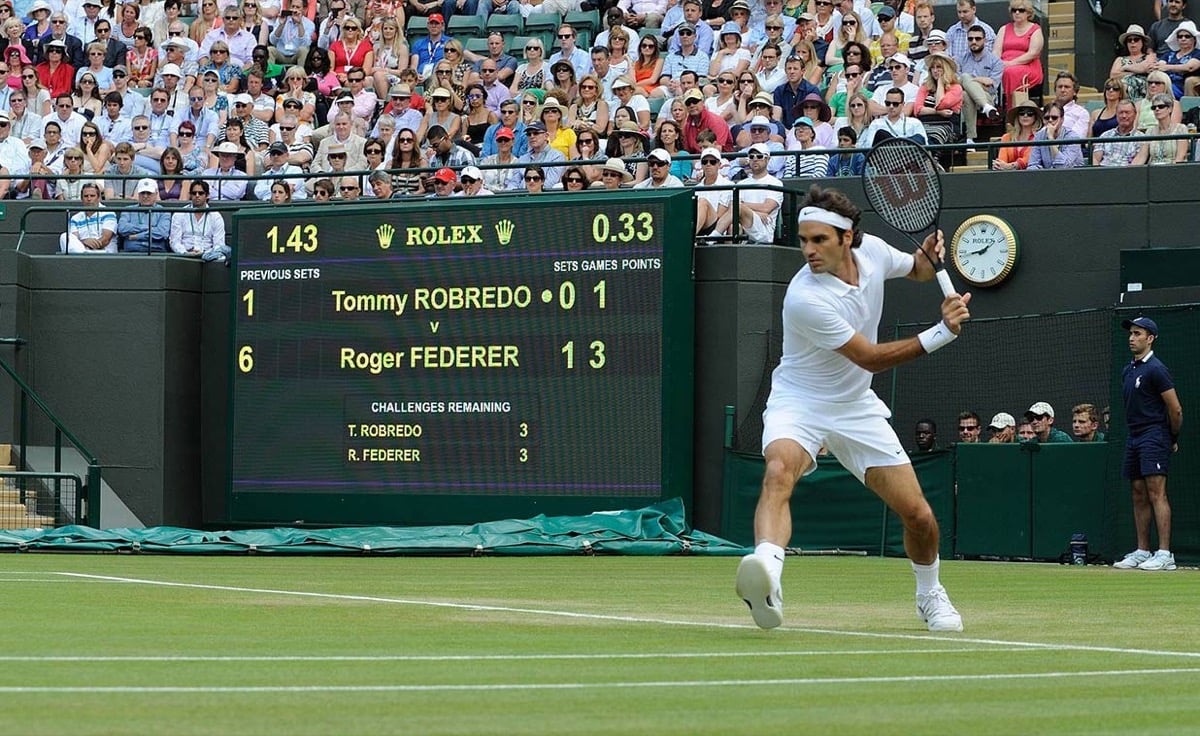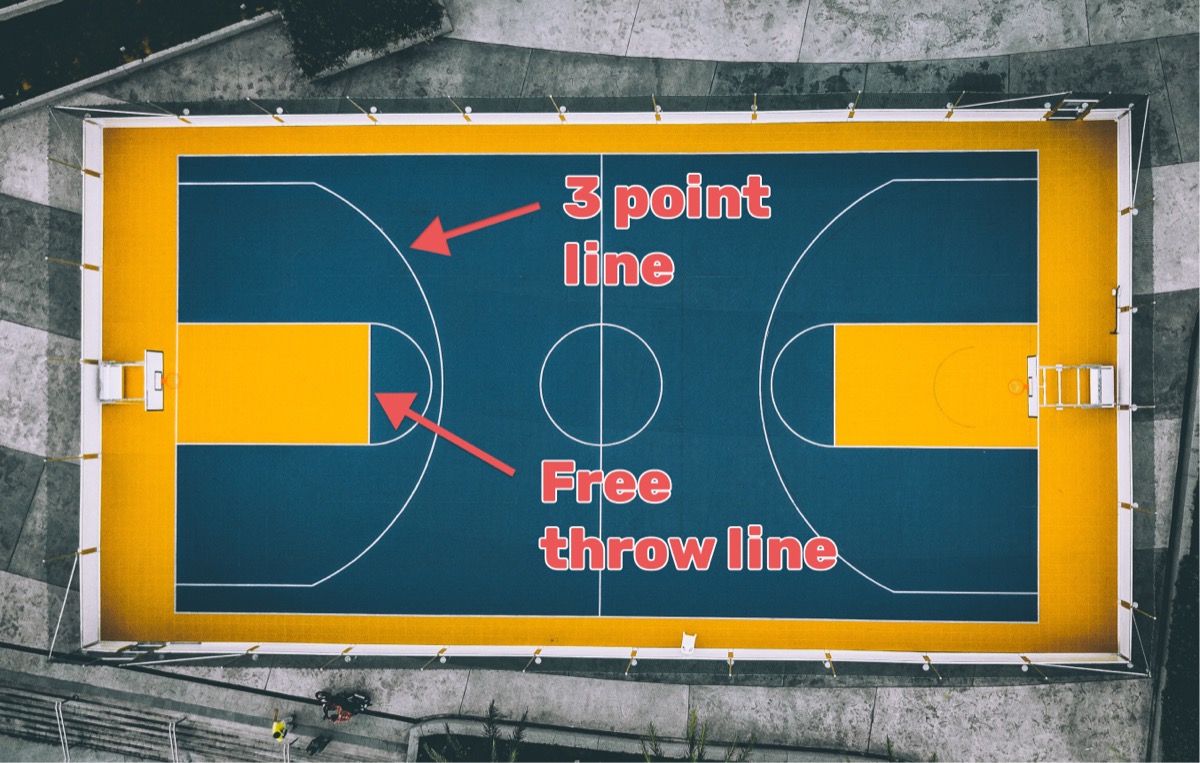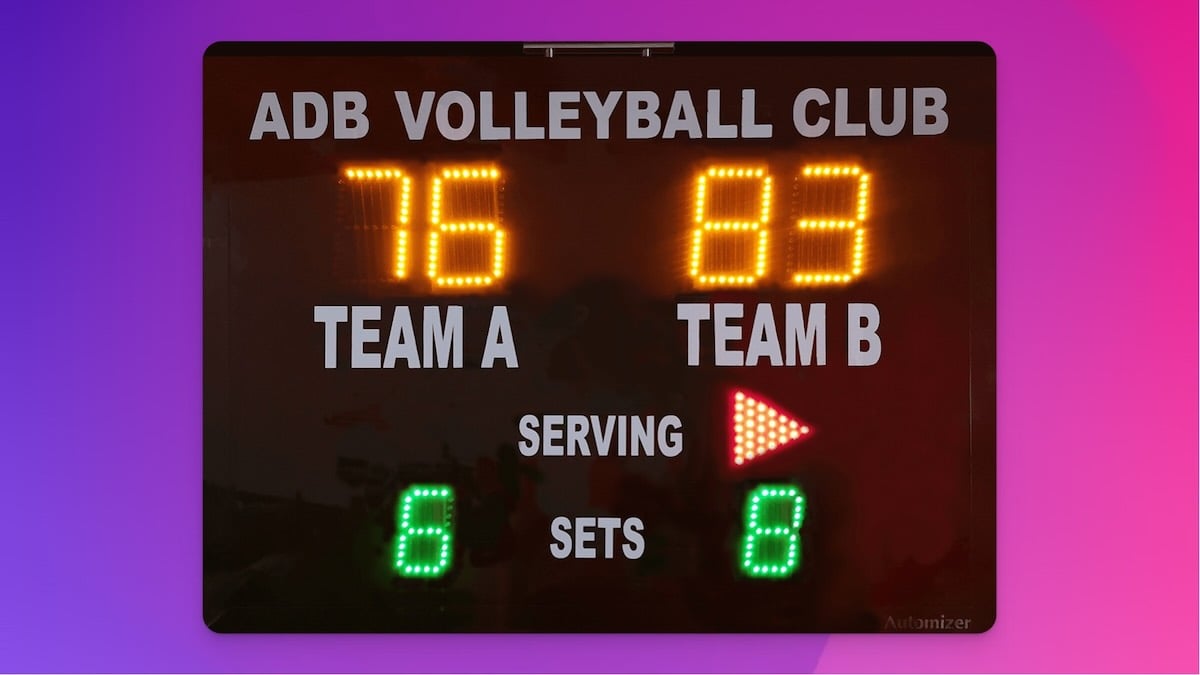Tennis may seem simple—hitting a ball over a net—but its unique scoring system of points, games, and sets often confuses newcomers. This guide demystifies tennis scoring across all levels of play, from casual matches to grand slams.

Points, Games, and Sets
Points
In tennis terminology, "zero" is referred to as "Love" - a term that has been part of the sport for centuries.
A player needs to win four points and have a two-point lead to win a game. Points progress from "Love" (zero), to 15, 30, and 40.
Deuce and Advantage
When both players reach 40 points (three points each), this is called "deuce".
From deuce, a player must win two consecutive points to win the game - winning the first point gives them "advantage", and the next point wins the game.
If the player with advantage loses the point, the score returns to deuce.
Sets and Matches
A set is won when a player wins six games with a two-game margin.
If games reach 6-6, a tiebreak is played to determine the set winner.
Match length varies by tournament format - men's matches are typically best-of-five sets, while women's and mixed doubles matches are usually best-of-three sets.
Service Rules and Scoring
Serving is essential to tennis scoring. The first server of the match is determined by a coin toss or spin of the racket. After that, players alternate serving entire games throughout the match.
A legal serve must:
- Land in the diagonal service box
- Clear the net without touching it
- Be hit from behind the baseline
- Be struck before the ball bounces
A fault occurs when any of these conditions aren't met. Players get two serve attempts - if both result in faults, this is a "double fault" and the point goes to the receiver.

Tiebreak Rules
A tiebreak begins when a set reaches 6-6. The first player to reach seven points with a two-point lead wins the tiebreak and the set. During a tiebreak, points are counted simply as 1, 2, 3, etc., rather than the traditional 15, 30, 40 scoring used in regular games.
Players alternate serves during the tiebreak, with the first server getting one serve and subsequent servers getting two. Players switch ends of the court every six points to maintain fairness.
Some tournaments, particularly in doubles matches, use a "match tiebreak" (first to 10 points) in place of a final set.
Example scoring progression
Here's an example score progression for a tennis game:
- Player A serves first and wins the point with a strong forehand. The score is now 15-0 or 15-love in favor of Player A.
- Player B responds with a solid backhand, but Player A wins the next point with a well-placed drop shot. The score is now 30-love in favor of Player A.
- Player B fights back with a few aggressive shots and wins the next two points to level the score at 30-30.
- Player A takes the lead again with a powerful serve, and the score is now 40-30 in favor of Player A.
- Player B hits a high, deep return, and Player A nets their next shot, making the score 40-40, or "deuce".
- The next point is crucial, and Player A wins it with a beautiful backhand down the line. Player A now has the " advantage".
- Player B hits a weak return on the next point, and Player A wins the game with a strong forehand winner. The final score for the game is 6-4 in favor of Player A.
- Player A has now won his first set.
Doubles Scoring
Doubles tennis follows the same basic scoring principles as singles, but with some key differences in service rules and court positioning. Each team must decide their serving order at the start of each set, and this order must be maintained throughout that set.
 A game of doubles
A game of doubles
The main difference between singles and doubles tennis scoring is the concept of "no-ad" scoring, which means that there is no advantage score. In doubles tennis, if the score reaches deuce (3-3), the next point wins the game.
What information is displayed on a tennis scoreboard?
 Roger Federer beside a tennis scoreboard in Wimbledon
Roger Federer beside a tennis scoreboard in Wimbledon
A tennis scoreboard typically displays:
- The names of the players or teams
- The current game score
- The number of games won in the current set
- The number of sets won by each player
- Previous set scores
Professional tournament scoreboards often include additional statistics and match duration, similar to the comprehensive score bugs in tennis broadcasts, but basic scoreboards focus on the essential game, set, and match scores.
Test Your Scoring Knowledge
Try these scenarios to test your understanding of tennis scoring:
Scenario 1: The Deuce Dilemma
A tennis match reaches deuce (40-40). Player A wins the next point to gain advantage, but then loses the following point. Player A then wins two points in a row.
Question: What is the final game outcome?
Scenario 2: The Tiebreak Challenge
In a tiebreak, Player A serves first and wins the point. Player B then serves and wins both points on their serve. Player A wins their next two service points, and Player B wins one point on their serve.
Question: What's the tiebreak score at this point?
Scenario 3: The Set Point Situation
The game score in a set is 5-4, with Player A serving. The game reaches 40-15 in Player A's favor.
Question: What kind of point is Player A about to play and what happens if they win it?
Using scoreboard software
Keepthescore.com offers a simple online tennis scoreboard. We pride ourselves on being very easy to get started with - you can be up and running in under 30 seconds, with no registration required.
What's particularly convenient is that you can control your scoreboard from anywhere, including a mobile phone.
 2 tennis scoreboards created on Keepthescore.com
2 tennis scoreboards created on Keepthescore.com






